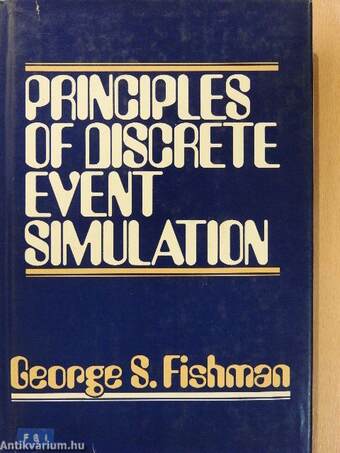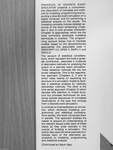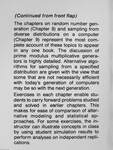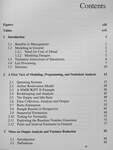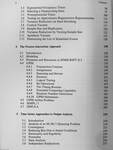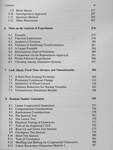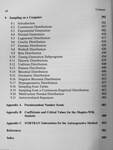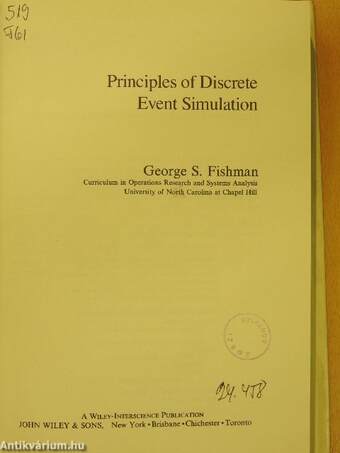1.062.618
kiadvánnyal nyújtjuk Magyarország legnagyobb antikvár könyv-kínálatát

VISSZA
A TETEJÉRE
JAVASLATOKÉszre-
vételek
Principles of Discrete Event Simulation
| Kiadó: | John Wiley & Sons, Inc. |
|---|---|
| Kiadás helye: | New York |
| Kiadás éve: | |
| Kötés típusa: | Fűzött keménykötés |
| Oldalszám: | 514 oldal |
| Sorozatcím: | Wiley-Interscience |
| Kötetszám: | |
| Nyelv: | Angol |
| Méret: | 24 cm x 16 cm |
| ISBN: | 0-471-04395-8 |
naponta értesítjük a beérkező friss
kiadványokról
naponta értesítjük a beérkező friss
kiadványokról
Fülszöveg
PRINCIPLES OF DISCRETE EVENT SIMULATION presents a comprehensive description of concepts and methods for modeling, programming and executing a discrete event simulation on a digital computer and for performing a statistical analysis on the results. The modeling concepts include detailed accounts of the event scheduling (Chapters 2 and 3) and process interaction (Chapter 4) approaches, which are the most commonly employed modeling techniques in practice. The programming account shows how to translate models based on the aforementioned approaches into executable code inSIMSCRIPT 11.5, GPSS V, SIMPL/1 and SIMULA.
The account of statistical considerations, which represent the book's greatest contribution, describes a multitude of alternative methods for analyzing the output of a discrete event simulation. These statistical methods fall into two broad categories. One is the regenerative approach (Chapters 2, 3 and 4) which relies heavily on exploiting the structure of a simulation... Tovább
Fülszöveg
PRINCIPLES OF DISCRETE EVENT SIMULATION presents a comprehensive description of concepts and methods for modeling, programming and executing a discrete event simulation on a digital computer and for performing a statistical analysis on the results. The modeling concepts include detailed accounts of the event scheduling (Chapters 2 and 3) and process interaction (Chapter 4) approaches, which are the most commonly employed modeling techniques in practice. The programming account shows how to translate models based on the aforementioned approaches into executable code inSIMSCRIPT 11.5, GPSS V, SIMPL/1 and SIMULA.
The account of statistical considerations, which represent the book's greatest contribution, describes a multitude of alternative methods for analyzing the output of a discrete event simulation. These statistical methods fall into two broad categories. One is the regenerative approach (Chapters 2, 3 and 4) which relies heavily on exploiting the structure of a simulation model to facilitate a statistical analysis by relatively elementary methods. The other is the time series approach (Chapter 5) which devotes little attention to model structure but provides techniques for analyzing sample sequences of correlated observations of the type that emerge from a discrete event simulation. In contrast to most textbooks on simulation, which introduce modeling, programming and statistical considerations serially, this book introduces them in parallel. This approach enables the reader to acquire an understanding of the relevant issues under each of these topics as they arise naturally in the course of building a simulation. The author also uses the same example to illustrate each of the alternative approaches to modeling, programming and statistical analysis.
(Continued on back flap)
(Continued from front flap)
The chapters on random number generation (Chapter 8) and sampling from diverse distributions on a computer (Chapter 9) represent the most complete account of these topics to appear in any one book. The discussion of prime modulus multiplicative genera tors is highly detailed. Alternative algorithms for sampling from a specified distribution are given with the view that some that are not necessarily efficient with today's generation of computers may be so with the next generation. Exercises in each chapter enable students to carry forward problems studied and solved in earlier chapters. This makes for ease of comparison of alternative modeling and statistical approaches. For some exercises, the instructor can illustrate concepts in class by using student simulation results to perform analyses on independent replications. Vissza
Témakörök
- Idegennyelv > Idegennyelvű könyvek > Angol > Egyéb
- Idegennyelv > Idegennyelvű könyvek > Angol > Természettudományok > Matematika
- Természettudomány > Matematika > Analízis > Általában
- Természettudomány > Matematika > Idegennyelvű
- Természettudomány > Matematika > Statisztika
- Természettudomány > Matematika > Tankönyvek > Felsőfokú
- Tankönyvek, jegyzetek, szöveggyűjtemények > Természettudományok > Matematika
- Tankönyvek, jegyzetek, szöveggyűjtemények > Természettudományok > Matematika > Felsőfokú
George S. Fishman
George S. Fishman műveinek az Antikvarium.hu-n kapható vagy előjegyezhető listáját itt tekintheti meg: George S. Fishman könyvek, művekMegvásárolható példányok
Nincs megvásárolható példány
A könyv összes megrendelhető példánya elfogyott. Ha kívánja, előjegyezheti a könyvet, és amint a könyv egy újabb példánya elérhető lesz, értesítjük.



